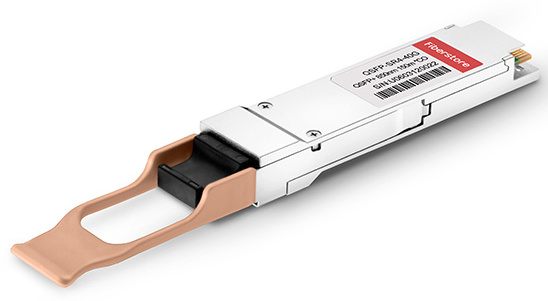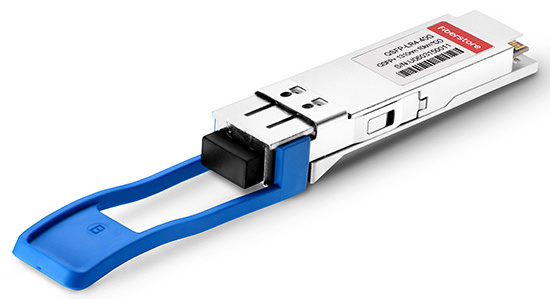Demand for higher bandwidth has never stopped. Along with the IEEE 802.3ba 40Gbps Ethernet standard published in 2010, 40G QSFP+ (Quad Small Form-factor Pluggable) fiber optic transceivers have been designed to solve the issues during 40G migration. Today, many kinds of 40G QSFP+ modules are widely applied to data centers. However, do you know which one is most suitable for your network? Don’t panic, this article will guide you to know the basic considerations for 40G QSFP+ transceivers selection.
Common 40G QSFP+ Transceiver Types
Here are some ordinary 40G QSFP+ types. Let’s have a look at their differences:
- 40GBASE-SR4
It reaches 40 Gbps Ethernet over four short-range multimode fiber optic cables and supports link lengths of 100m and 150m respectively on laser-optimized OM3 and OM4 multimode fiber cables. Because of the 850nm vertical-cavity surface-emitting laser (VCSEL) modulation limits, the multimode fiber uses parallel-optics transmission instead of serial transmission. Parallel-optics transmission uses a parallel optical interface where data is simultaneously transmitted and received over multiple fibers and the interfaces are 4x10G channels on four fibers per direction.

- 40GBASE-LR4
It reaches 40-Gbps Ethernet over four wavelengths carried by a single long-distance single-mode fiber optic cable and supports link lengths of up to 10 km over single-mode fiber with duplex LC connectors. It operates at a wavelength of 1310 nm. The 40 Gigabit Ethernet signal is carried over four wavelengths with 10G on each wave. Multiplexing and demultiplexing of the four wavelengths are managed within the device. It is designed to use in switches, routers and data center equipment where it provides higher density and lower cost when compared with standard SFP+ modules.

- 40GBASE-CR4
It is a direct attach cable segment with the QSFP+ modules attached to each end of the cable. It reaches 40-Gbps Ethernet over four short-range twinaxial copper cables bundled as a single cable and supports link lengths of up to 10 km over a standard pair of G.652 single-mode fiber with duplex LC connectors. The QSFP+ modules are plugged into the QSFP+ ports on the switch or computer interface. Before you choose to use the 40GBASE-CR4 , please make sure the QSFP+ modules on the cable support the QSFP+ port on your switch or computer interface.
Aspects to Consider During Selection
Cable Type
Cables used with fiber optic transceivers should be matched with each other. As for 40G QSFP+ transceivers, 40GBASE-LR4 can be used with single-mode fiber cables for long distance transmission. And 40GBASE-SR4 is recommended to be used with OM3 or OM4 in short distance with lower insertion loss and higher bandwidth.
Connector Type
From the interface of 40G QSFP+ transceiver, we can know the right connector type. Usually, 40G QSFP+ modules uses the MTP (a high performance MPO connector) and LC connectors. But some special transceivers such as 40GBASE-PLR4 and 40GBASE-PLRL4 will use the MPO interfaces.
Transmission Distance
Just like the common transceivers, 40G QSFP+ modules have different transmission range, such as 100m, 150m, 300m, 1km, 2km, etc. You can decide your transceiver type according to the transmission distance you need.
Wavelength
Wavelength is also an important aspect to consider which 40G QSFP+ transceiver to choose. For example, 40GBASE-SR4 transmit and receive channels in the 832nm to 918nm wavelength range. Make sure the transceiver is working at the right wavelength for your network.
Conclusion
Certainly, many other parameters should also be considered as selection basis. If you are not sure which type to choose, better ask the professionals for help. In order to achieve a high speed network, 40G QSFP+ modules are the necessary solutions. The right selection will contribute a lot to your network transmission.
没有评论:
发表评论